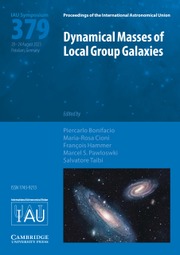No CrossRef data available.
Article contents
A statistical view of low-ionization structures in planetary nebulae
Published online by Cambridge University Press: 06 October 2025
Abstract
More than three decades after the pioneering imaging catalog by Balick (1987), where the small-scale and low-ionization structures (LISs) in planetary nebulae (PNe) became evident, the present study conducts a comprehensive statistical analysis of LISs’ physical-chemical and excitation properties. Gathering the largest dataset to date, we compare LISs with high-ionization components (rims/shells) across a diverse sample of PNe. Key findings include lower electron densities (NeS ii) in LISs than in adjacent rims/shells and comparable electron temperatures (Te N ii and O iii) between these two nebular componets. Various optical diagnostic diagrams, while revealing a clear excitation stratification between these groups of components, are not good enough to clearly pinpoint the main excitation mechanism behind the LISs line-emission. Photoionization and shock models highlight a notable overlap between mechanisms, emphasizing the coexistence of both excitation processes. Contrary to expectations, shocks are unlikely to be the primary excitation source for most of LISs in PNe.
Information
- Type
- Contributed Paper
- Information
- Proceedings of the International Astronomical Union , Volume 19 , Symposium S384: Planetary Nebulae: A Universal Toolbox in the Era of Precision Astrophysics , December 2023 , pp. 156 - 162
- Copyright
- © The Author(s), 2025. Published by Cambridge University Press on behalf of International Astronomical Union


